Things to do in Andalusia
What to experience far from the crowds
What to experience far from the crowds
Let’s start this blog article with a little anecdote, shall we? One day, I received a phone call from a former customer who used to come to my wine shop. It didn’t take me long to realise that the person on the other end of the line was dying to share her news with me. She had just booked a group trip to Andalusia and was already planning to leave the group and come round for a cup of coffee. “Terrific idea,” I said, “where about in Andalusia are you then?” “In Tarifa” was her innocent reply.
Oh dear! This gave me the collywobbles. How could I break it to her gently that a 4.5-hour drive might be a bit long for a cup of coffee … and then you have to drive all the way back again … so, unfortunately, the reunion was off. 😥
You must know, that Andalusia is one of the three largest autonomous regions in Spain and is located in the very south. With approximately 8.5 million inhabitants, Andalusia is the most populated autonomous community in Spain. Size-wise it is the second largest with 87,268 square metres. Good for you, because it provides enough space for a plethora of unique and remarkable sights to discover 🙂
Our beautiful town of Mojácar is located almost in the very east. A 600-km drive separates us from the Portuguese border in the far west. If you travel from north to south, it’s 250 km.
Andalusia encompasses the province of Huelva in the far west and the provinces of Cádiz, Málaga, Seville, Córdoba, Jaén, and Granada. And last but not least, there’s the province of Almeria in the far east. Each of these provinces holds a particular charm, but I’ll tell you more about that later.
Andalusia – most people first think of beach holiday or cultural trips. With 360 days of sunshine a year, it’s hardly surprising that Andalusia is Spain’s top travel destination and always enjoys a leading position in the ranks of the statistics for European holiday destinations.
As I live in the province of Almería in the very east, I’ll start with this province and make my way to the west for you.
I apologise if I go into too much detail with my holiday tips for Almería, but inevitably I know this region best. Like you, I only visit the other provinces to go on holiday myself 🙂
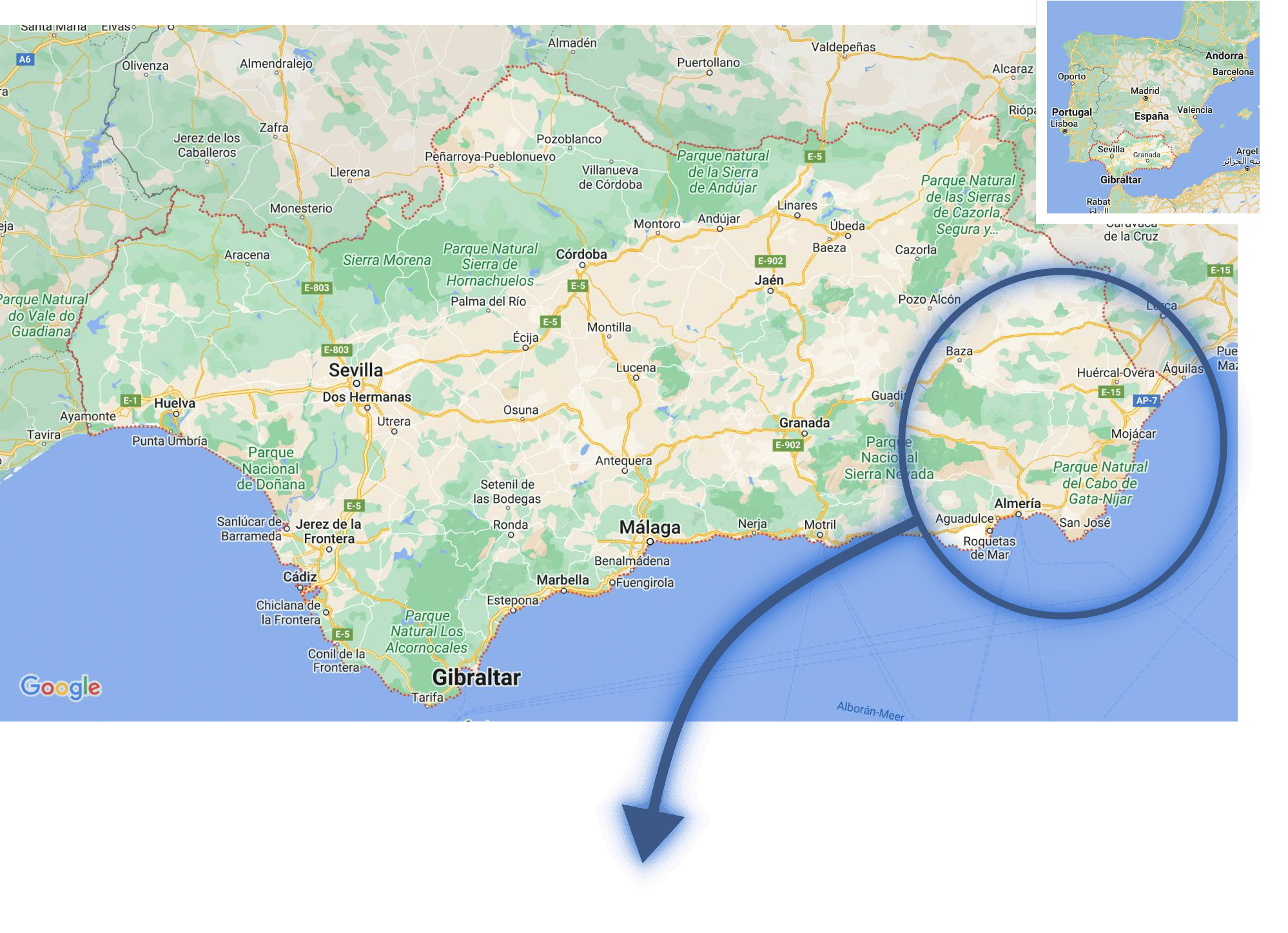
You’ve already been to the Costa del Sol, the Costa de la Luz and you can also tick off the classic round trip in Andalusia on your list? You’d like to see new attractions in Andalusia that you haven’t seen yet. Well, how about the province of Almería?
You’ve never heard of Almería? Then you’ve definitely missed the boat – if you’re a nature enthusiast and give tourist hotspots a wide berth, that is.
Well, what shall I say? I also know that the Costa del Sol is much better known. But that is why the number of tourists is massive – as well as the concrete jungle: all tourists want to be accommodated. Or let me rephrase that: the Costa del Sol is extremely built up.
Sure! There’s a lot more to Andalusia than the Costa del Sol. There’s Córdoba, Sevilla, Granada, Ronda and Cadiz – these cities aren’t featured in every travel guide for nothing. They put Andalusia on the world’s cultural map. I can only advise everyone to make a much vaunted round trip through Andalusia, that have precisely these cities on their itinerary. Even though I personally prefer travelling on my own: there are tour operators that offer great touring packages. One highlight definitely is travelling on the historic “Al Andalús” …
But if it’s a little less bustle and culture and in return oodles of nature you’re craving, then the province of Almería is just the thing. Needless to say, Almería offers a lot of culture, too: the Moors have clearly left their mark everywhere. But besides that, pretty much everything in Almería revolves around a fabulous and truly unique nature. It is the reason why I packed my bags in Germany and moved here in 2014.
I’ve been exploring the area for the past 10 years. I have a feeling that I’ve come to know every stone, every cove, every tree. And yet Almería never fails to impress me. However, you’ve got to know the most beautiful corners as they – luckily – aren’t mentioned in just any travel guide. And you have to know what is worth a visit and what isn’t. I have you covered! Here are my best tips.
This is the way to our extensive overview of all things to do in Almería.
We’ve got lashings of things to do – you’ll see.
Now, before I take you to the other places of interest in Andalusia, I’ll fill you in on a little, but nevertheless important
“Andalusia” derives from the word “al-Andalus”, the Arabic name given to the province by the Moors after having conquered it. You can find traces of the Moorish past in every province of Andalusia. And that’s the reason why a round trip through Andalusia is still the best-selling holiday with tour operators. Andalusia is the region that has been under Moorish rule for the longest period of time in Spain. The Muslims ascendancies most notably are visible today in the architecture of Andalusia. In 1492, the Reconquista brought the Moorish domination to an end.
If you’d like to take a deep dive into the more recent history of Andalusia and Spain in general, Franco’s dictatorship and the Spanish Civil War, you’ll find a wealth of information both on the internet and in numerous history books. But to go into this in detail would take us too far afield. I’ll deal with the Spanish culture and cultural sights later.
Well, on the record Castellano is also the official language in Andalusia. However, the Andalusians have a strong dialect that not even the Spaniards of other regions can easily understand. For instance, they tend to swallow both the “d” and the “s”. The explanation of the locals: while they consider it to be the best, i.e. economical, Spanish as you can say more in less time 🤣, my ears, as a consequence, get chewed off regularly. And whether it’s always useful remains to be seen 😊…
In addition, the Andalusians love using the diminutive form for just about everything, which the Rhinelander in me, thus, welcomes with open arms. “Fine with me,” you may think. But yet again, it’s not that easy, as they have their own way of doing so. Fancy an example? Right. Here they don’t say “pequeñiTo”, but “pequeñiLLo”.
Well, that depends on where exactly you want to spend your holiday in Andalusia, of course.
There are 6 airports in Andalusia (in alphabetical order):
Almería, Córdoba, Granada, Jerez de la Frontera, Málaga, Sevilla
Find out more about flights to Andalusia here.
If you happen to want to come to us in Mojácar, the best way to get here is to fly to Almería or, if you can’t get a flight to Almería, to Alicante and Murcia. That’s definitely shorter than flying to Málaga.
If you are planning a city trip, you’ll be perfectly fine with getting about from city to city with public transport. However, as soon as you want to visit attractions in the hinterland, it’s a different ball game, and we advise you to rent a car.
As in every holiday country, the car rental companies in Andalusia sometimes go from bad to worse – “Ni fu, ni fa,” as the Spaniards say.
But I won’t make no bones about it: without a rental car you’re simply stymied. And we advise you to either read the reviews or to ask people who have already used the company. The hosts of your accommodation will also be able to recommend good car rental companies.
In our case, for example, we have an arrangement for our guests with a local car rental company that we know personally. This way, we can offer our guests not only fair prices without extra charges materialising out of the blue, but are also 100 % positive that you receive impeccable service.
It bears repeating that Andalusia is huge. So it definitely draws its uniqueness from its diversity. No region is like the other – every region charms with its own particular highlights.
However, to me personally the Andalusian people are second to none. In my blog article about Mojácar, I tell you why I never want to leave this beautiful speck of land on the Costa de Almería. But actually, the same is true for all of Andalusia – if you read the blog article, you’ll know what I mean.
Well, first and foremost, there’s the sun, sand and sea, obviously. Then there’s culture like you wouldn’t believe it, magnificent nature parks, unique landscapes and absolutely divine food. Not to forget the Andalusians – a terrific, quintessentially positive bunch who accept every challenge with a smile – and with a glass of wine in their hand 😉
I deliberately refrain from giving extensive explanations of famous cathedrals, Mezquitas, plazas, Horse Riding Schools etc. It goes without saying that particularly these things are a reason to visit these places, but you can find all the information you need on the internet. That’s why I only mention them without further explanation.
Those who know me know that I prefer to travel away from the tourist crowds and often look for sights in the local landscape. That’s why I’ll only touch on the well-known sights in Andalusia, and let you in on MY Top 3 must-see highlights in detail in every Andalusian province in this article.
Granada – the city that is mostly known and visited for the Alhambra. Without a doubt, the Alhambra is outstandingly beautiful and of incredible cultural value. But Granada has so much more to offer that a day trip to the Alhambra simply will not do this beautiful city justice.

These three names stand for villages, or rather, the 3 pearls of the Alpujarras Granadinas. All of them charming villages that can be beautifully discovered and accessed for hiking together. Apart from hiking, the lively little village Pampaneira in particular is perfect for strolling about. The speciality is the colourful “Jarapas alpujarreñas”, typical carpets from small weaving mills. Oh and the chocolate – simply delicious. Read my blog article “Pampaneira – the good Lord has also emigrated” to find out why and how chocolate came to Pampaneira and what else there is to discover.
In winter, the Sierra Nevada, would you believe it, turns into Spain’s skiing hotspot with lots of snow between December and April.
What’s so amazing about this is that one day you can be up here on your skis, and the next day you can be sunbathing on the beach of the Costa Tropical. Life in Andalusia can be so beautiful and diverse 😉
The rest of the year, the Sierra Nevada is a magnificent hiking resort with well-marked hiking trails galore. Alternative activities you can also experience here are mountain biking, climbing, paragliding and much more.
Zambra María la Canastera: in a cave in Sacromonte, where one of the most famous dancers of the district, María la Canastera, once lived, you will not only see a cave dwelling typical of this district, but also experience flamenco at its best.
Just take a look at the walls to see who has already visited the cave 😉
Still a family business, it is now run by her children and relatives who keep the tradition of flamenco alive.
The show lasts about an hour and presents songs and dances of the Sacromonte Zambra: the Alboreá, the Cachuchá la Mosca, the Fandango del Albaicín and the Tangos del Sacromonte, which you can solely enjoy here in the Zambras.
Obviously, there are plenty of other very good shows. But be careful with shows that include dinner. Often neither the flamenco nor the food is worth its price ;-), but there are always exceptions, and you might be lucky.
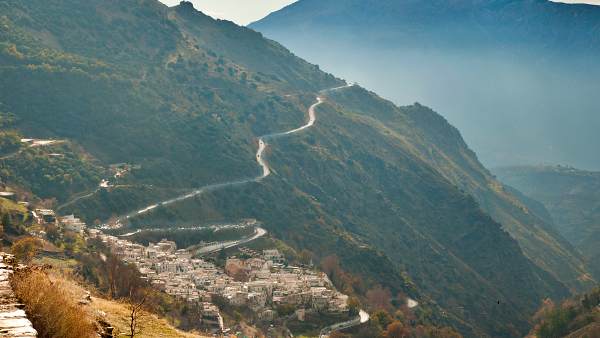

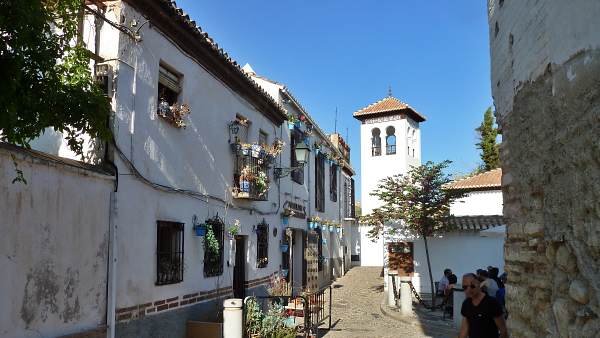
From the three cities Almería, Huelva and Jaén, Jaén probably is the least known. At least, the first two cities have the advantage of being located relatively close by the sea, even if they are hardly advertised. Jaén, on the contrary, is located in-country in the mountains. Apart from the summer months, it really has nothing to do with the warm, tropical Andalusia as we know it. In fact, it can get quite cold here.
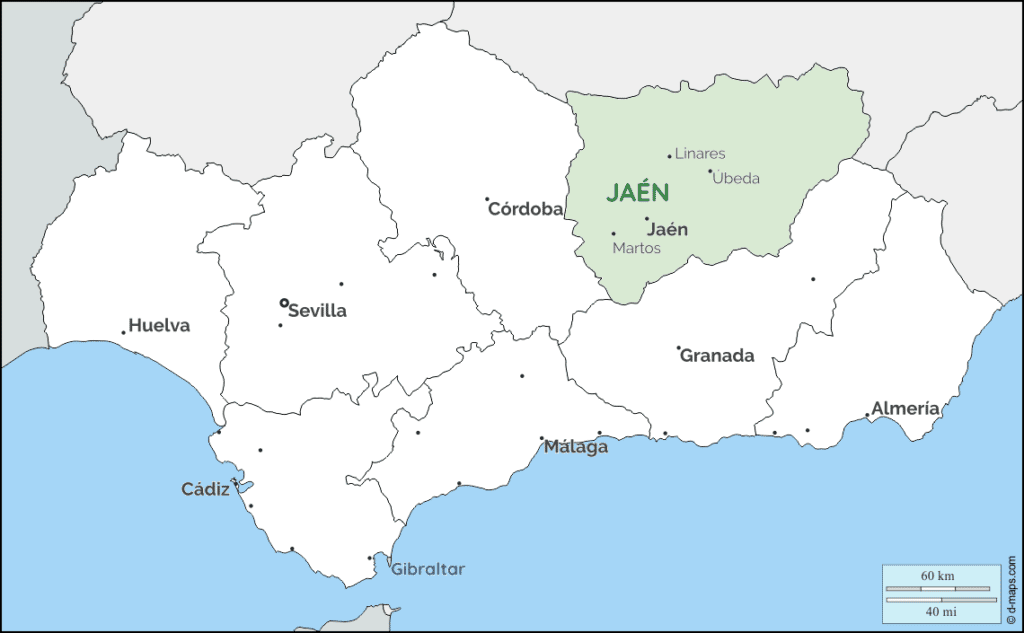
Most people associate Jaén with …
It is common currency that Southern Europe is a global leader in growing and processing olives into liquid gold – olive oil. But most people don’t know that the province of Jaén is responsible for half of Spain’s olive oil production and for 20 % of the world’s olive oil production. Once you’re there, you’ll understand why. Every square inch of land outside the cities and natural parks is covered with endless rows of olive groves. It adds up to a huge amount of olives.
Those who know us will inevitably know María from our favourite restaurant, Cabo Norte in Mojácar. María was born and raised in Jaén and says the following to anyone who travels to Jaén for the olive oil:
“Every hamlet, however small, has at least 3-4 olive mills. Among these you’re bound to come across splendid qualities. But the best areas are the Sierra Mágina and from Bailén towards El Condado. And while you’re there, you should also look at the Sierra de Cazorla.”
If you’d like to know more about olive oil, just drop me a line at info@el-sarmiento.com
These two towns in the heart of the province are probably the best places to lionise Renaissance architecture outside Italy. So much so, that UNESCO designated both cities a world cultural heritage. In Úbeda, the cityscape is dominated by magnificent palaces and chapels, while in Baeza you’ll find university halls and an incredible cathedral.
Their unusual-sounding names derive from the Arabic rule. After the Reconquista in the 13th century, the two cities became what are now Ubeda and Baeza. A few centuries later, Francisco de los Cobos from Ubeda became State Secretary to King Carlos I. In this position, he was able to bring funds to the south to transform the two cities into Renaissance gems.
The Sierra de Cazorla, Segura and Las Villas Natural Park is a nature reserve in the north-east of the province of Jaén in Andalusia (Spain). With an area of 214,336 ha, it’s the largest protected area in Spain and the second largest in Europe. The UNESCO declared it a Biosphere Reserve in 1983, a Natural Park in 1986 and a Special Protection Area for birds (SPA) in 1987.
So it’s not surprising that the scenic beauty and biological richness combined with the cultural heritage of the region visitors can find her make it one of the most visited natural reserve in Spain.
The region is ideal for extensive hiking tours. Especially in summer, when it can be hot and humid on the coast. Here, mainly pleasant temperatures, plenty of shade from the trees and lots of water along your way make for a very pleasurable walk – even in summer. We invite you to take a closer look at the region on Google in the image search – to get a first-hand impression of the beauty of the area.
You can also enjoy delicious food here, for example at Restaurante & Bistró Casa Alfonso in Cazorla. And if you were thinking “Uh, I could really do with some wellness,” then I have you covered, because the Hotel & Spa Sierra de Cazorla 4 is the perfect place to succumb to this desire.
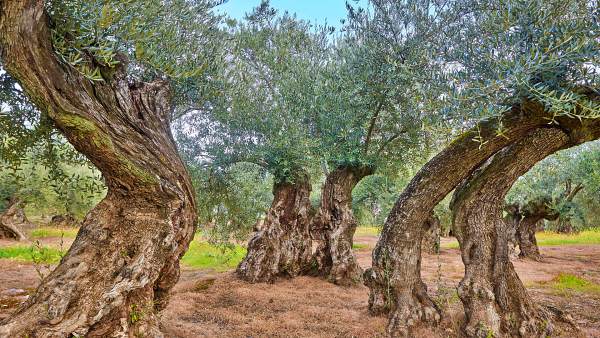
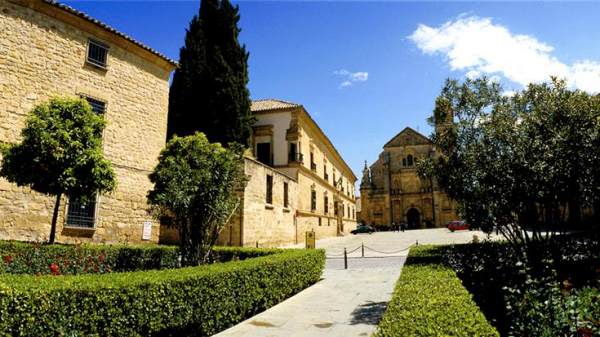
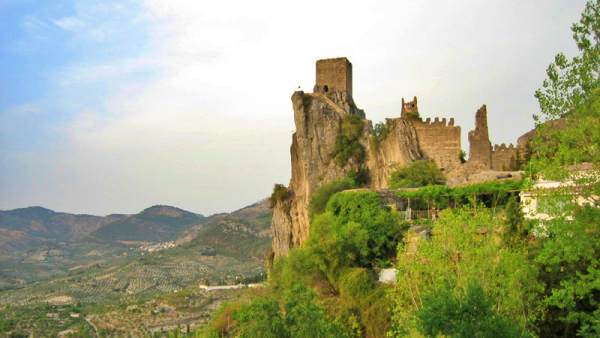
The Mosque-Cathedral undoubtedly is the prevailing reason for driving to the city of Córdoba. With all the incredible cultural assets that the cities has to offer, it’s really hard to focus on other special features outside the city centre.
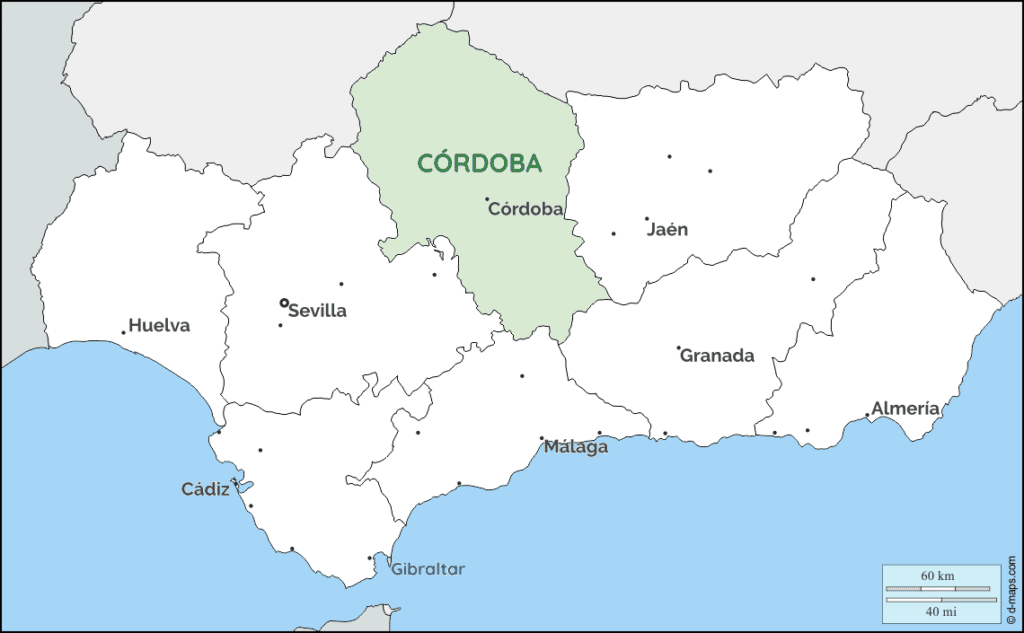
The Baños de Popea are located near the estuary of the Guadiato River. The area was once crossed by Christopher Columbus. Today small waterfalls and backwaters in alternating sequence cross the magnificent landscape and follow the course of a stream called Molino.
The poets of the Cántico group from Córdoba used to hide here, as this was a safe place during Franco’s regime. Well, the intellectuals have always had the tendency of being a thorn in the side of every dictator.
The end of the Festival Las Cruces de Mayo in May marks the start of the competition of the Patios of Córdoba. The patios are open to the public for two weeks.
The first week of the two-week event focuses on the competition, whereas the second week is devoted to the award ceremony. However, the patios can still be visited, especially those that have won awards in the current year, which automatically get more attention due to the jury’s decision.
In addition, open-air dance events are usually held near the patios, so you can enjoy the typical Andalusian gusto while visiting the patios with good wine and local music.
If you’re a nighthawk and up for a little stargazing then you should prick up your ears, because my following tip will make your stargazer’s heart sing. In December 2016 the Valle de los Pedroches region was declared a Starlight Reserve. With a quality that ranks among the best of the world, the night sky of the valley offers superb conditions for stargazer.
There are various places in the Valle de los Pedroches that make for the perfect spot for stargazing. At these spots there are events organised around stargazing. What you’ll see is, as the Andalusian would say, quite “espectacular”. Well I guess, you don’t have to speak Spanish to understand that 😉
Guess what Los Pedroches is also famous for? Well? Do you know? Piggies!
The DO Los Pedroches Denomination of Origin was created in 2006 and is the youngest Denomination of Origin in the world of tasty morsels from the Iberico pig.
The Iberian pigs of Los Pedroches from which all Iberian products are made for you to enjoy, are raised in the dehesa. You can taste or buy mouth-watering local cold meats in all the villages of the Pedroches Valley: ham, pork fillet and chorizo … and, of course, the fresh pork.
Some of the companies in these villages offer guided tours through the factories. This is an excellent opportunity to learn about the production process, witness a demonstration of ham slicing (you can take my word for it, it’s an art) and, of course, taste the products.

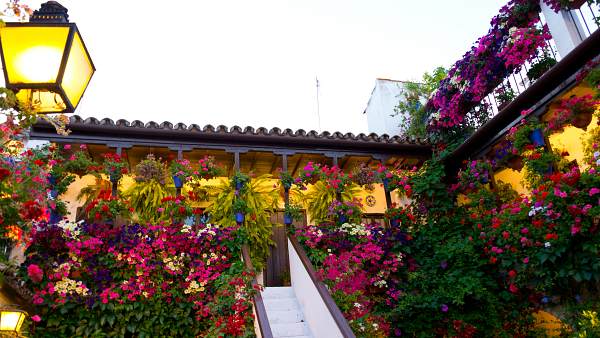
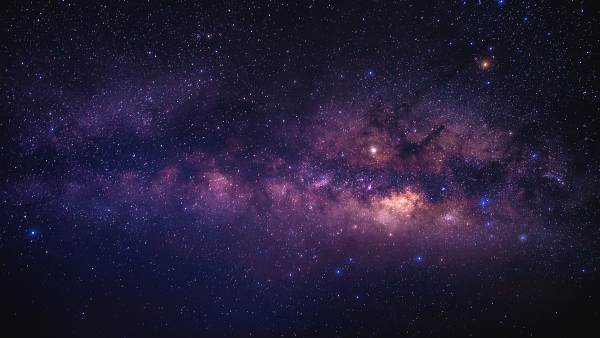
Now we’ve finally arrived at the most difficult part for me. Beyond the shadow of a doubt, Málaga is very popular with tourists and the most important tourist destination in Andalusia with regard to visitor numbers, but it’s unfortunately the province I like the least. I find mass tourism extremely off-putting so that I sometimes fully forget the picturesque little corners. But rest assured that I’ll do my very best to remain objective. To prove the point, I’ll start with something unbelievably beautiful …
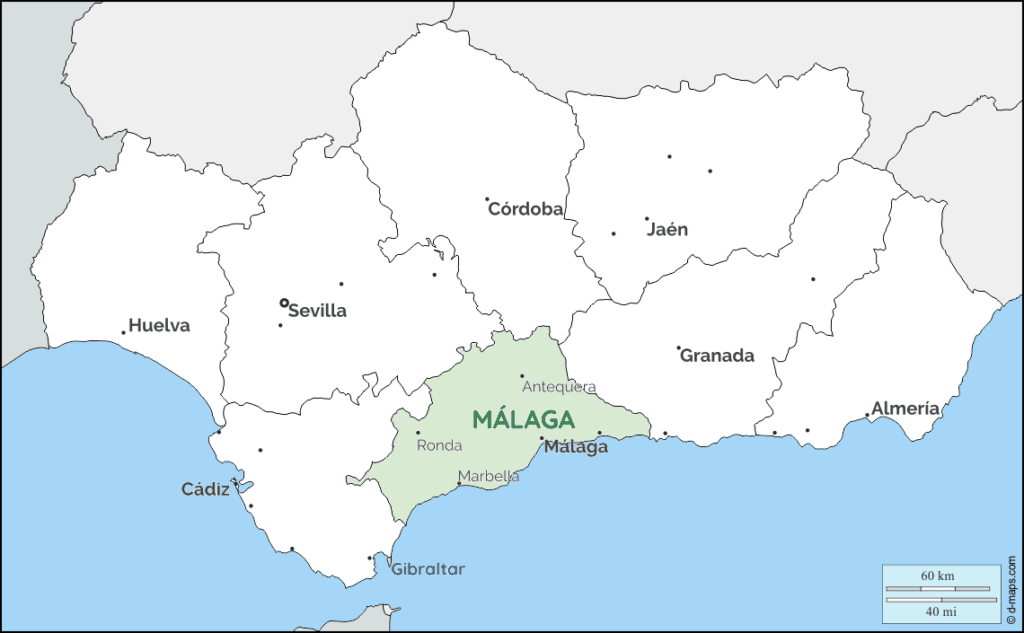
This Nature Reserve has been a UNESCO World Heritage Site since 2016. When you are in Málaga, a trip to the Nature Reserve is something you really don’t want to miss.
The Torcal de Antequera Nature Reserve is probably one of the most impressive examples of karstic landscapes in Europe and owes its name to the dolines or torcas, which are curious formations in the shape of circular depressions.
Some of them, like El Toro and Marinaleda I, bear evidence that they have been populated since prehistoric times.
Three routes invite you to ramble about this city of stones. This beautiful and somehow surreal setting offers a wonderful panoramic view of the countryside and the town of Villanueva de la Concepción.
And if you’re really lucky, you can see eagle owls that call this area their home – it’s really quite something!
The internet is practically full of information about the beauty of Ronda; whether it’s about the El Tajo Gorge, the Puente Nuevo or the bullring. But in this blog article, I would like to acquaint you with the highlights beyond the usual paths – one of them being the Casa del Rey Moro in Ronda. Trust me, it won’t dash your expectations.
The Casa del Rey Moro is a huge complex consisting of three parts: the water mine, the house and the garden.
The water mine dates back to Nazarite times and is known as one of the best preserved examples in Spain.
The house in Neo-Mudejar style representing the amalgamation of several 18th century houses was designed by the Duchess of Parcent.
The garden was designed for the Duchess by Jean-Claude Nicolas Forestier in 1912. This is considered a “Bien de Interés Cultural” in Spain. This essentially means a protected cultural asset, which, according to the Spanish law Del Patrimonio Histórico Español, includes not only material goods, but also knowledge and activities that express a significant cultural tradition of the Spanish people.
Rincón de la Victoria has a gem that’s unique in the whole of Europe: the Cueva del Tesoro (treasure cave). It’s one of only three known sea caves in the world. The other two are in Asia and Central America.
Remains from the Palaeolithic and Bronze Ages have been found in the cave’s galleries. During a relaxing stroll through the caves, you can enjoy the bizarre shapes that the water has left behind over thousands of years. With a little luck, you might find the famous treasure that is said to still be in the cave.
I can tell you that this truly warms the cockles of my heart as it reminds me of the unique cave formations in the province of Almería. So we, too, can actually show off something unique in our beautiful province of Almeria 😉

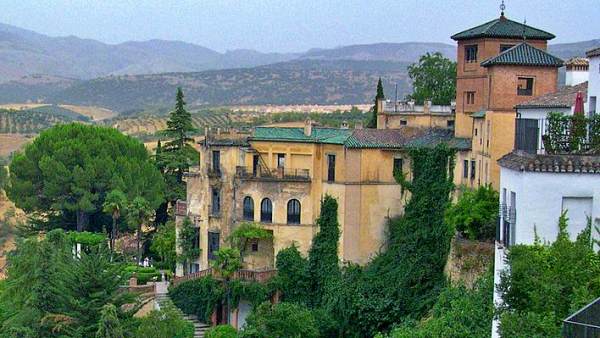
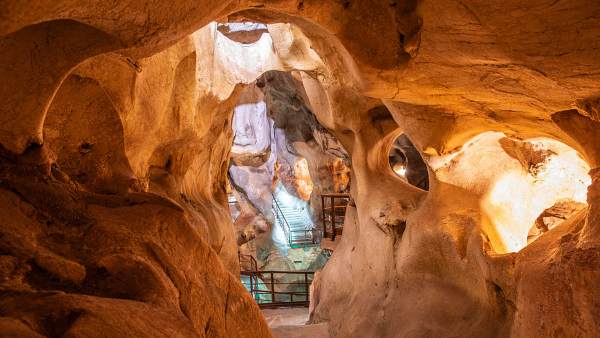
Seville prides itself on being the home of flamenco. You know, the vocal and dance storytelling that is only accompanied by the guitar. Since flamenco is THE cultural asset of Andalusia (and has even been declared an Intangible Cultural Heritage of Humanity by UNESCO since 2010), I think I’ll have to apply myself to a separate blog article to this topic in the near future.
And of course Seville is famous for the Alcázar and the cathedral. But that’s too mainstream for me. I prefer to go off the beaten track and take you to the more remote places.
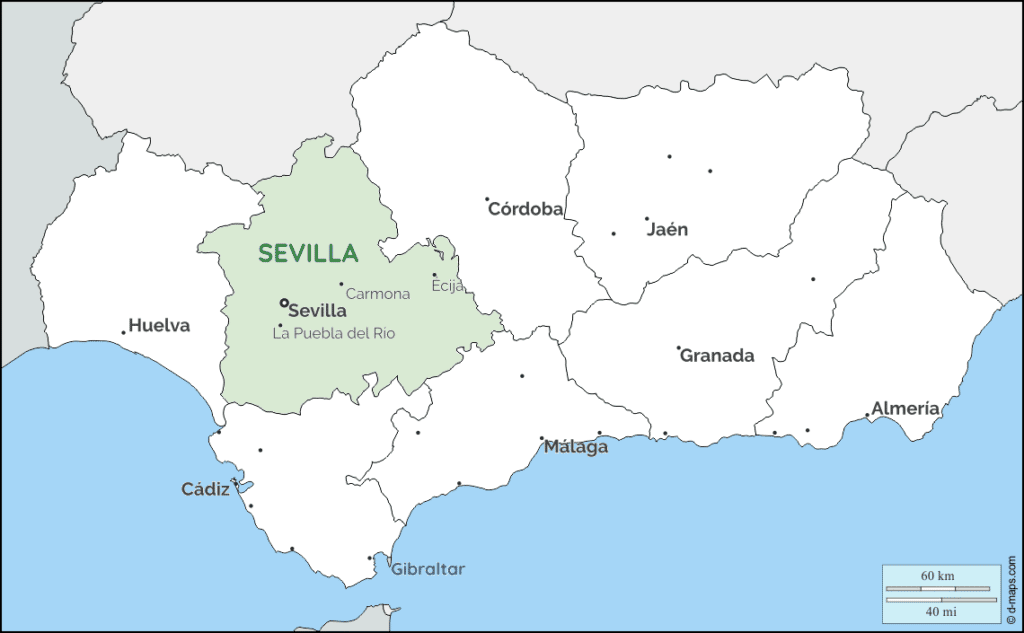
The Sierra Norte, just like the Cabo de Gata Nature Park in the province of Almería, joined the ranks of certified UNESCO Global Geoparks in 2011. The landscape is one-of-a-kind especially for hiking-enthusiasts or amateur photographers, who’ll unequivocally get their money’s worth.
Streams, reservoirs and the Cascada de Hueznar waterfalls give variety to seemingly endless hiking trails.
The famous Iberico pigs feel at home here. And you can come across suckling pigs, which by the way enjoy great popularity throughout Andalusia. What’s more, you can even go mushrooming. Now that’s really something down my alley! In contrast to the Costa de Almería, it’s much wetter here and there are trees that provide shade. Amazing! I always go a bundle about it, especially about all the oak trees – like in Huelva. It’s an absolute dream!
Oh yes, before I forget: they can make really delicious aniseed schnapps up here. An absolute must-try 😋
Gotcha! Time to fess up that you’ve never heard of Carmona. Ah well, admittedly it’s only for a short time of the year when this place comes to fame. And it’s only thanks to National Geographic who named Carmona one of the top three destinations for blooms. In this case – sunflower blossom. Unfortunately, you only get to know the true promise of this magic between the beginning of May and the end of June (well, thanks to climate change, it is subject to change at any time). But the sunflower bloom is definitely well worth a visit 🌻.
Outside the enchanting bloom, the palace of King Don Pedro de Carmona is also definitely worth visiting 😉
Now I’m really sharing an insider tip with you, because it’s in a province where practically everything is common currency. However, the application for recognition of Ìtalica as a UNESCO World Heritage Site was submitted in 2017. If that goes through, it will probably put an end to the peace and quiet 😬
Ìtalica is an excavation site of one of the most advanced cities in the Roman world at that time. The extent and quality of the preserved buildings and city will leave you speechless, I’m sure.
The city was founded in 206 BC by Publius Cornelius Scipio as a place of recovery and rest for wounded troops as well as a place of residence for his war veterans. It was also the birthplace of the emperors Trajan and Hadrian.
Under Emperor Augustus, the city developed into what was then called the nova urbs. A new city that had a sewer system and services and was thus among the most modern cities that existed at the time – state of the art, so to speak.
The city was inhabited until the Moors took over and was known as Sevilla “La vieja” – the old Seville!
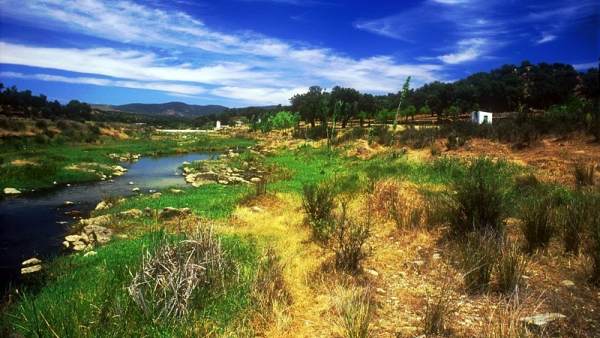
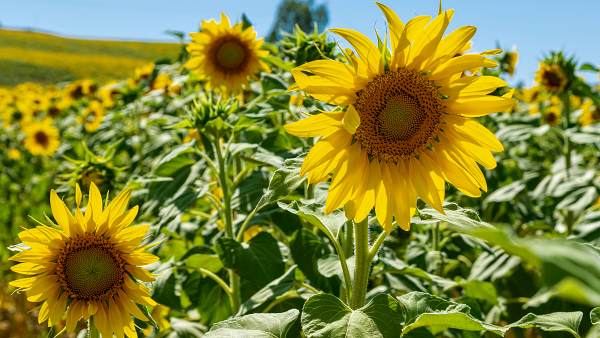

Come to think of it, we should have looked for our new home in the province of Cádiz, as the province is believed to be a paradise for epicures. And if you know me, it’s not without reason that two of my highlights are actually dedicated to bonne bouches – oops, this actually also applies to the third one. 🙈

These two cities are like two peas in a pod. Jerez, or more precisely the Denominación de Origen Jerez, enjoys a worldwide reputation for its sherry wines. Unfortunately, unlike in the UK, people aren’t too keen on it in Northern Europe, but sherry is traditionally one of Spain’s leading wine productions.
The prime produces of Vino Jerez, i.e. sherry are:
By the way, our sherry tasting is the perfect opportunity for you to take a deep dive into the world of sherry during your stay with us. Being a great sherry fan myself, I’ll tell you all about the nuts and bolts and which are the most important sherry bodegas.
Now I bet this has you asking yourself what on earth does Sanlúcar de Barrameda have to do with Jerez? Why indeed. Because a look at a map of Andalusia will show you that Jerez is further inland. However, England has always been the number one market (also for historical reasons). So, the sherry had to get there somehow or other. As a result, the sherry was shipped from the port of Sanlúcar de Barrameda to England. … As a matter of fact, they produce their own sherry, manzanilla, in Sanlúcar de Barrameda. But the manzanilla along with its local wine called “Barbadillo”, is not my cup of tea, really. I have one or two anecdotes up my sleeve for you when you come here.
Oops, I did it again: I named two places together, because the two are about? Well, can you guess? Exactly. As the name of the second place suggests, it’s all about tuna.
The tuna from this region, fished with the more than 3,000-year-old tradition of the “Almadabra”, is considered the best tuna in Spain. In the past, red tuna was only served in the best restaurants in Cádiz, but now you can also find it in top restaurants all over Spain. Here in Mojácar, you can enjoy it when in season in our friend’s restaurant, the Cabo Norte.
I seem to be on a roll here now … bracketing another two villages together – but this time for no reason, except that I can’t make up my mind.
The two villages, just like “our” village Mojácar, rank among the most beautiful white villages in Spain.
Vejer de la Frontera is really a mind-bogglingly beautiful village and a delight to amble through. As far as I am concerned, I liked the Plaza de España and the old flour mills the most, one of which has been converted into a restaurant.
And speaking of restaurants (probably the reason why I hopelessly fell in love with Vejer): You can eat great food here. Personally, the Moroccan cuisine at El Califa absolutely wowed me.
And I’ve got another little insider tip ready for you. If you’re somewhere in and around Vejer, there’s a small pond called Patria about a 15-km drive outside Vejer Centro. Admittedly, it’s quite outside the sticks, but it’s definitely worth it. Out there, you’ll come across the eponymous restaurant Patria run by Åse y Thomas, two surfing restaurant owners. Just wait and see …!
So what about Sentenil de las Bodegas? Well, this little village, gently tucked under a mountain, is simply something for the heart. The most famous photo is probably that of Calle Cuevas del Sol.
If you’d like to see for yourself, why I find Sentenil particularly special, head over to the village’s official Instagram account.
But Sentenil de las Bodegas also deserves closer attention for its excellent gastronomy and for a unique campsite – yes, you heard that right.
Camping El Nogalejo is known for its “huts” and apparently also for its very good food. Unfortunately, I haven’t been able to connect the dots myself yet, because when we close our bed and breakfast in Mojácar in the winter months and find the time to tour “the rest” of Andalusia, the campsite is closed down for winter, too. But somewhere along the line it’ll work out – I’m sure!
I just remembered, in case you’re still groping in the dark why we chose the province of Almería over the province of Cádiz. In actual fact, the latter would have been far more suitable for the little gourmand in me. However, I’m also a sun-seeking, chilly little gourmand. And from my point of view, the Atlantic coast of Spain, the Costa de la Luz, can get quite cold and gloomy in winter, which doesn’t agree with me at all.
The mild Mediterranean climate in Mojácar is more down my alley 😬 .


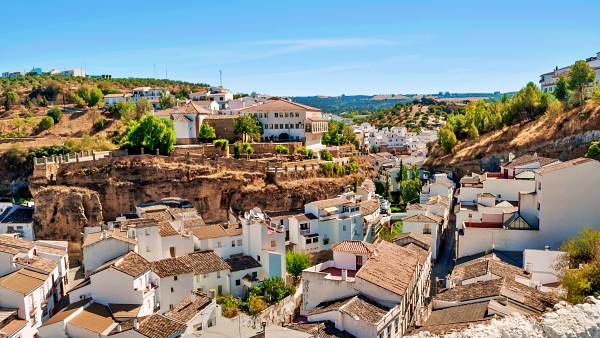
Huelva suffers from the same fate as the province of Almería (my province): hardly any tourist knows about it. And not without reason, as it doesn’t boast the cultural monuments that Granada, Córdoba and Seville are famous for. But it’s precisely the fact that it’s such an outsider that I have such a soft spot for this province. And there are really exciting things in abundance to discover.

Did you know that you can now travel to Mars by train! No kidding! The Mining Park has created a new experience and thus has opened its doors to visitors to discover those places where NASA, the European Space Agency and other institutions have been carrying out research and tests related to the exploration of Mars and other space missions for years.
A pneumatic train takes you to spectacular places which you then can explore by foot, such as the “Red Earth” or the “Great Black Wall”, which indeed look just like Mars. Absolutely amazing, if you ask me!
By the way, bear in mind that the mining park is located on the Rio Tinto, quite an exciting natural spectacle in itself. Or have you often come across red rivers?
The Gruta de las Maravillas, the Cave of Wonders, is the landmark of Aracena. The wealth and variety of stalactites, stalagmites, columns, and passages that you can see along its 1,200-metre long path have been formed by the persistence of water, stone and time into what you see today. All together make it one of the most visited caves in Spain and one-of-a-kind in Europe.
But this underground complex, above all, is: an installation of breathtaking beauty. So don’t miss it when you visit Huelva.
And last but not least, go to Jabuga. What do you think will you see there?
Ham! At last! Those who know me know that I am virtually addicted to tasty food and good wine. And you know what: ham from Jabugo is more than just tasty. Here we find the vast pastures of the world-famous Ibérico pigs from, among others, the major producer for these regions, Cinco Jotas.
You can find more information about this culinary cultural asset in our E-BOOK.
In the book you can also learn about the difference between the various quality levels up to the D.O.P. Bellota – that would would take us too far afield in this blog article.😬
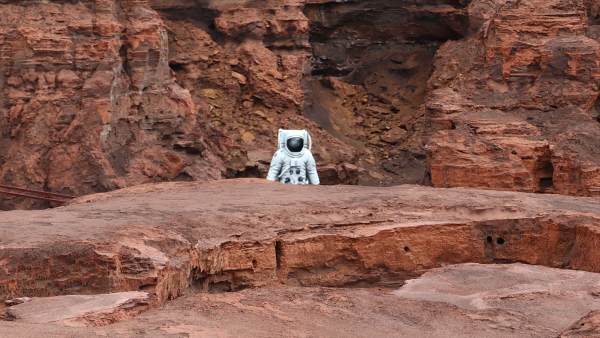
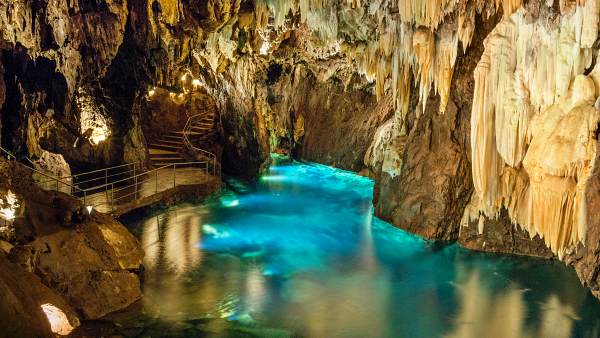
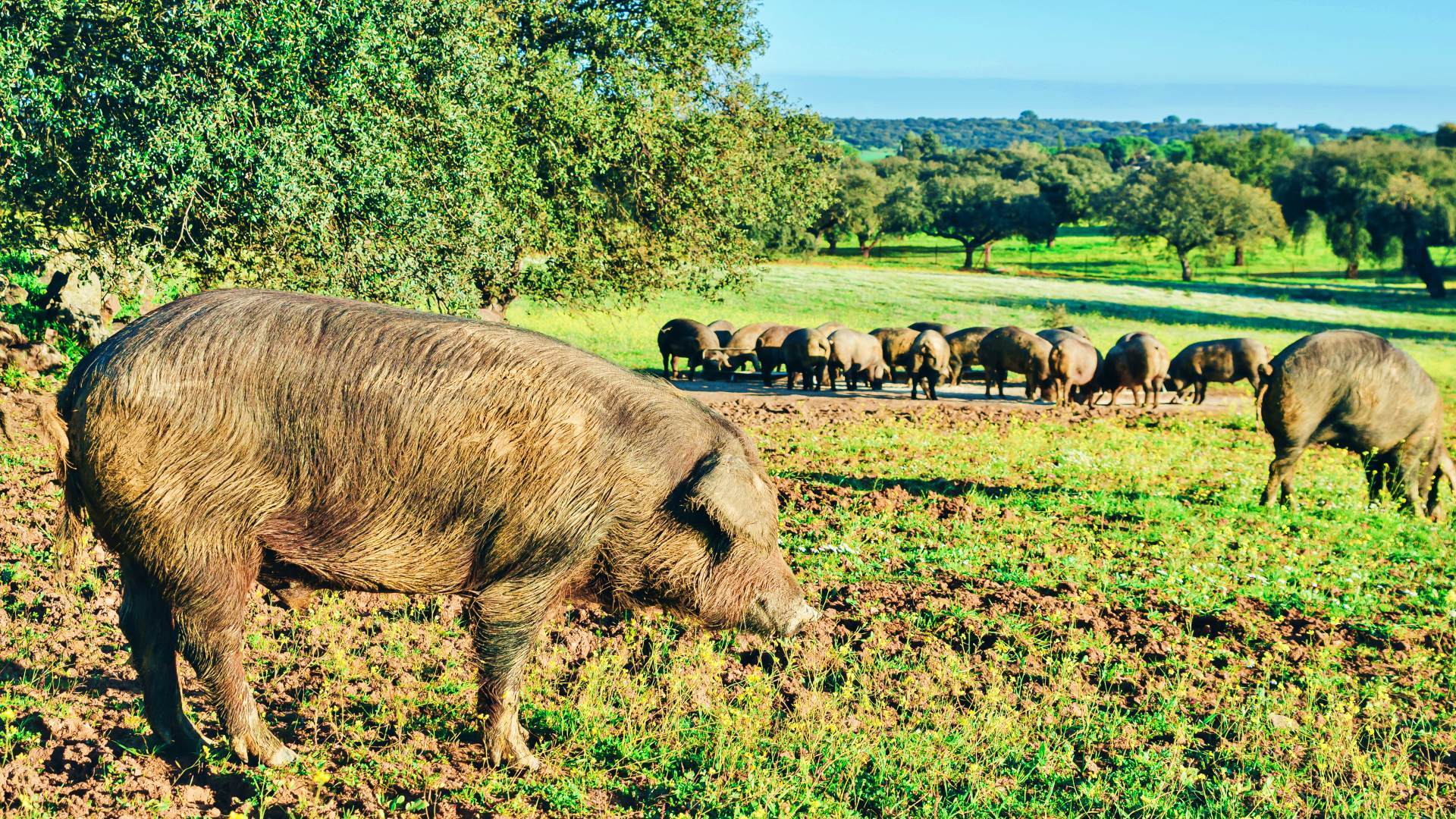
There you go: these are my favourite places and my most important sights in Andalusia. The best way to discover them is on a road trip.